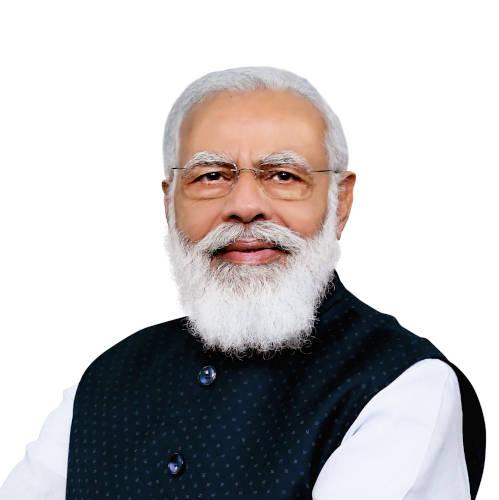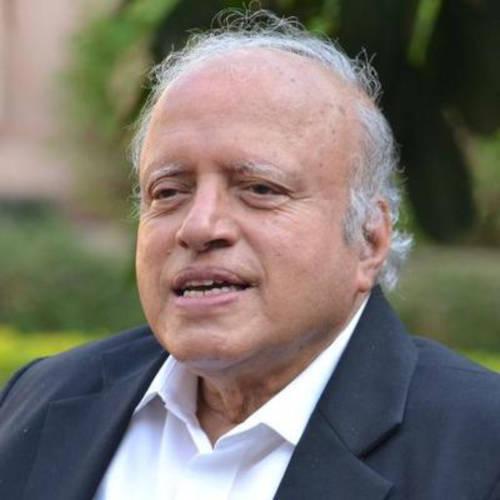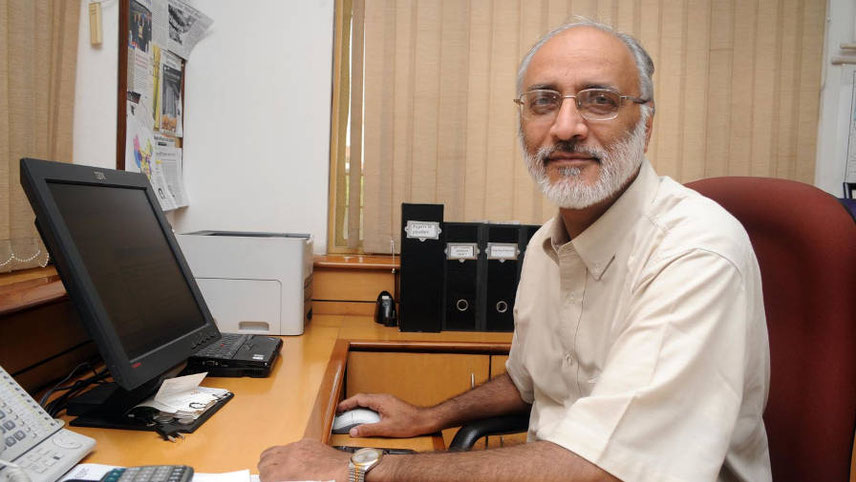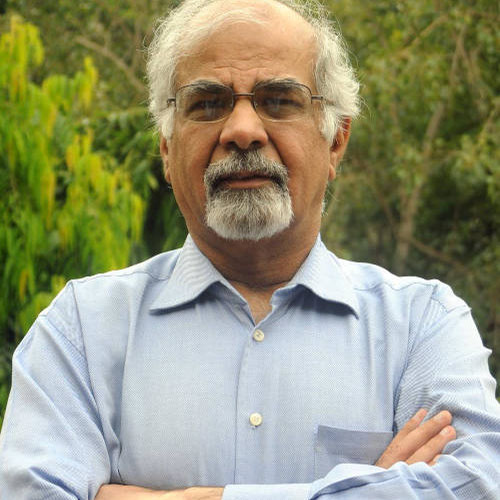-

Modi: MSP mechanism “was there, is there and will be there”
Farmers are demanding that the MSPs be calculated as per the report of agricultural scientist M.S. Swaminathan, known as the father of India’s Green Revolution. The report recommended that the Union government should pay MSPs for farm produce by using a broader and more comprehensive measure of cultivation costs than the one being currently used.
But what would be the MSP value of the total production of the 23 crops that the government would be burdened with? According to one calculation, it could be as much as Rs10 lakh crore. But given that all of the produce is not marketed by farmers and some kept for self-consumption, the marketable surplus would be at least Rs8 lakh crore. That’s a lot of money.
Farmers, on the other hand, say the government would not be spending more than an “additional amount” of Rs1 lakh crore annually if it decided to buy the entire marketable surplus.
Swaminathan report
In the fifth report of the National Commission on Farmers set up under his chairmanship, Swaminathan recommended that MSPs – which act as a floor price to avoid distress sales – should be “at least 50 per cent more than the weighted average cost of production” ship. The 50 per cent over costs meant complete costs called C2, which includes all assumed costs. The protesting farmers, apart from a repeal of the laws, have also demanded a law guaranteeing MSPs calculated using the C2 yardstick.
The C2 formula of calculating cost of cultivation includes the imputed cost of capital and the rent on the land to give farmers 50 per cent returns, rather than a narrower measure that takes into account the all paid-out costs incurred by a farmer and the value of family labour (A2+FL ). How cost of production is calculated matters. Average MSPs fixed for winter-sown crops show that if C2 costs are used as a benchmark, returns for most crops are lower than 50 per cent. However, when A2+FL is used, returns are higher than 50 per cent in crops such as paddy and wheat.
The Modi government says it has implemented the Swaminathan commission recommendation by setting MSPs such that they offer 50 per cent returns over costs of cultivation, a decision first announced in the 2018-19 budget. However, the government uses the narrower A2+FL measure to calculate MSPs. “Our demand is that MSPs should be based on C2 costs and the government should make it compulsory for all traders to pay MSP rates to farmers,” said Darshan Pal, a senior farm union leader.
Relevance questioned
Policy makers and economists are divided over the MSP’s relevance. In 2019, just before general elections, Surjit Bhalla, the pro-Modi economist who was later handpicked to be India’s executive director at the IMF, mooted abolition of MSP for three years. “The next government should cut corporate tax by 5 per cent, expand income support scheme and abolish MSP in the next three years. There should be zero interference in agriculture,” Bhalla had said in May 2019.
Even today, government economists make no bones of the fact that legalizing MSP would disrupt the market equilibrium, drive out private traders, lead to inflation and result in decline in farm exports. A NITI Aayog working paper shows that segments like horticulture, milk and fishery, where government intervention is low, showed 4-10 per cent growth whereas paddy and wheat, where MSPs and interventions are high, have registered low growth.
-

Swaminathan: stick to C2 yardstick
Others say the farm sector is in severe distress and need to be protected through MSPs and other such instruments. “MSP is essential for the farming sector to protect it against uncertainty in production and market fluctuations,” said V Upadhyay, adjunct professor of economics at IIT-Delhi.
Flawed idea?
On the face of it, the current brouhaha over MSP appears flawed. First of all, a blanket law mandating that no trader can buy any farm commodity below this threshold price could be tough to implement. Forcing private traders to buy produce above certain price thresholds goes against the principles of free economics.
In India, most agriculture commodities are sold outside the agricultural produce marketing committee (APMC). Who is going to monitor the price at which a small farmer is selling to a trader? What if wily traders refuse to pick up the stocks from hard-pressed farmers in a bid to tire them out? Does the government have the capacity to buy all the produce?
“Statutory MSP involves huge Central expenditure and this will be a bigger problem for the Modi government,” said Sudhir Panwar, a professor of Lucknow University and former member of UP Planning Commission, now aligned with the Samajwadi Party.
The most immediate impact of such a law will be higher food inflation. Higher MSPs prima facie leads to higher overall prices. According to Sonal Varma, chief economist, Nomura, every 1 percentage point increase in MSPs leads to a 15-basis point increase in inflation. A basis point is one-hundredth of a percentage point.
But farmers are expected to step up their demand because they feel it will be a direct step towards higher income. Unlike the three farm laws which were un-operational for all practical reasons, farmers feel statutory MSP is something which directly affects the fortunes of farmers. The real reasons of course lie elsewhere.
Currently, Indian farmers receive lower-than-international prices for much of their produce because of increasing costs of cultivation, inadequate markets and the government’s policy to keep food prices low. This has worsened agriculture’s terms of trade, measured as a ratio of prices of agri-products to prices of manufactured items. The crisis, therefore, is not one of low production, but of low prices.
Risky proposition
The government realises that bringing a law guaranteeing MSP to cultivators for their produce is replete with risks and so is trying to buy time. Modi has said that a committee, with representatives of the Central government, state governments, farmers, agricultural scientists, and agricultural economists, will be formed to make MSP system more effective and transparent. It will also suggest ways to promote zero budgeting based-agriculture.
The reforms that Modi had promised to rescind aimed to allow businesses to freely trade farm produce outside regulated markets, called mandis, permit private traders to stockpile large quantities of essential commodities for future sales and lay down a national framework for contract farming.
Farmers feared the new economic agenda could pave the way for the government to stop buying staples at federally fixed MSP and would leave them at the mercy of private buyers. The government has insisted it will still buy staples at MSP, but farmers have demanded a law that prohibits purchase of major farm produce below state-set minimum prices.
-
While MSPs have incentivised foodgrains over other crops, they have given rise to serious imbalances of water and land resources and shifted land away from crops, such as pulses and oilseeds, necessitating costly imports
MSPs, which began with the Green Revolution, are set such that they offer 50 per cent returns over cost but mainly benefit paddy and wheat growers because the government procures only these two commodities in sufficiently large quantities. MSP as an idea belonged to the period when India faced a food crisis.
In those days of war and food crisis in mid-1960s, the government used to secure the food grains from farmers to send it out across the country through Public Distribution System. MSP became an important policy tool that helped achieve food self-sufficiency because it gave farmers assured prices. It is an important price signal. It is an administrative exercise that does not have statutory backing.
At this point of time, however, India has excess of food grains. Agriculture experts add that it will become a massive logistical issue for the government to house the excess of food grains bought from the farmers at MSP.
Shanta Kumar report
Shortly after coming to power in 2014, Modi had set up a committee headed by Shanta Kumar, former CM of Himachal Pradesh and a BJP veteran from the Vajpayee-Advani era, to examine the restructuring of Food Corporation of India and a whole gamut of agriculture reforms. It was on the Shanta Kumar committee’s recommendation that the government launched the Pradhan Mantri Kisan Samman Nidhi (PM-KISAN) scheme before the 2019 elections, giving cash incentives to farmers.
Other recommendations the government implemented were the launch of a crop insurance scheme, soil testing, and discouraging the bonus on MSP. The committee came to the conclusion that only 6 per cent of big, elite farmers benefit from the MSP.
But the 6 per cent figure that the Shanta Kumar committee floated is dated and would now be an underestimate, as it is based on the National Sample Survey Office’s (NSSO) ‘Key Indicators of Situation of Agricultural Households in India’ report for the 2012-13 farm year (July-June). But there is little doubt that the MSP policy benefits farmers only in a handful of states – mostly in paddy and wheat-growing states.
Official data on procurement of major crops by designated agencies for 2019-20 shows that procurement of paddy/rice and wheat by FCI, is followed chana (chickpea), arhar/tur (pigeon pea), moong (green gram), groundnut and rapeseed-mustard by the National Agricultural Cooperative Marketing Federation of India (NAFED); and cotton by the Cotton Corporation of India. It also includes milk procurement by dairy cooperatives, which are largely quasi-government organisations that pay assured prices to farmers even if not technically MSP.
Bereft of dynamics
Economists say an MSP mechanism that ignores dynamics, such as demand and global prices, creates distortions. If it is not profitable for private traders to buy at federally-fixed MSP, when demand is low, then the private sector will simply exit the markets. In such a scenario, the government simply cannot be a monopoly buyer of all produce.
As it is, the government already procures staggering quantities of surplus rice and wheat, which have become unmanageable. The government on average holds at least 70 million tonnes of rice and wheat in federal stocks, whereas food-security norms require reserves of 41.1 million tonnes as of July and 30.7 million tonnes as of October each year.
-

Gulati: exports could become non-competitive
According to Ashok Gulati, farm economist, the noted farm economist, the cost of procuring, storing and distributing rice to the poor comes to about Rs37 a kg. For wheat, it is around Rs27 a kg. The cost to company (CTC) of labour of the FCI is six to eight times higher than private labour. Therefore, market prices of rice and wheat are much lower than what it costs the FCI to buy them.
If MSP is made mandatory, then India’s agricultural exports could become non-competitive because the government’s assured prices are way higher than both domestic and international market prices. No trader would want to buy at a higher price and export at a lower rate. So, the assumption behind the new changes is that free competition in agricultural markets will ultimately result in a market-clearing price, at which quantity supplied equals quantity demanded, resulting in an equilibrium.
While MSPs have incentivised foodgrains over other crops, they have given rise to serious imbalances of water and land resources and shifted land away from crops, such as pulses and oilseeds, necessitating costly imports. Also, MSPs, as administered prices, tend to distort market prices. They often ignore the demand side, international prices, export competitiveness and ecological impacts of crops such as paddy.
WTO catch
This also means surplus stocks can’t be exported without a subsidy, which invites World Trade Organization’s objections. WTO rules cap government procurement for subsidized food programmes by developing countries at 10 per cent of the total value of agricultural production based on 1986-88 prices in dollar terms. “Support to farmers can never be in question. But support in the form of MSP, which is market-distorting, raises questions, such as ‘whether can we move to other ways of supporting farmers that cause less collateral damage,” said Pravesh Sharma, a fellow at New Delhi’s Indian Council for Research on International Economic Relations.
But farmers are pointing out that while every year the Central government announces MSP for 23 crops, the procurement at these prices is not guaranteed because the MSP is not legally binding on the agencies and buyers of these crops. In a season of bumper crop, the price received by the farmer does not even meet the cost of transportation of the produce from the farm to the market. According to an OECD-ICRIER report, farmers have suffered a loss of Rs45 lakh crore between 2000-01 and 2016-17 as a result of non-payment of their input cost dues.
Besides, farmers say, there are more than 100 crops in the country but MSP covers only 23. Further, barring two-three crops in three-four states, government procurement at MSP is not ensured in most states. Only 6 per cent of the farmers in the country get MSP on three-four crops, out of which 85 per cent are farmers from Punjab and Haryana from whom the government agencies buy wheat and paddy at MSP.
That’s why maize sowing is almost over in Punjab except in some semi-hilly stretches of Pathankot and Hoshiarpur districts. During the current Kharif season, farmers were forced to sell their maize at Rs800-Rs1,000 per quintal instead of the government-approved MSP of Rs1,870 per quintal.
-

Bhalla: abolish MSP for three years
The crux of the demand is that the farmers are not getting the price for their crop. Modi had said in 2017 that such steps are being taken by the Centre which would double the income of farmers by 2022. Farmers now want to know from the government what steps have been taken so far to double their income.
Income support
Siraj Hussain, former union agriculture secretary and currently senior fellow, ICRIER, says that granting MSPs statutory cover is a tough nut for any government to crack. “I think it is a very complex question which cannot be decided by the government in a manner in which the farmers want it.” Instead, farmers should be shielded from the “huge fluctuations” which they have to face.
Giving examples of other countries, he said that China provides direct income support, the United States has a price insurance system in place and in Europe the Common Agricultural Policy features two main pillars: Pillar 1, under which direct payments to farmers and market interventions are covered; and Pillar 2, under which rural development programmes are supported. Hussain prefers income support instead of MSP.
Besides, he points out, policy planners must keep in mind that agriculture is not uniform across the states. The 2018-19 data of farmer incomes proves that the situation of farming households in Odisha and Jharkhand is very bad – they are earning just about Rs5,000 a month. Agricultural policies must be tuned to the local situation, which is why the Constitution made agriculture a state subject.
The road ahead, he said, “should be to enable state governments to formulate policies that are ecologically sensitive to their requirements. In the original Green Revolution states, now facing water stress, the Centre should provide sufficient funds for diversification from paddy.”
The list of ideas goes on. The reports of committees headed by M.S. Swaminathan and S.S. Johl are compendiums of expert advice. But to implement the suggestions contained in them, one has to pick and choose. Besides, any government keen on tackling the issue will need the political will and financial resources which currently seem to be in short supply.






































